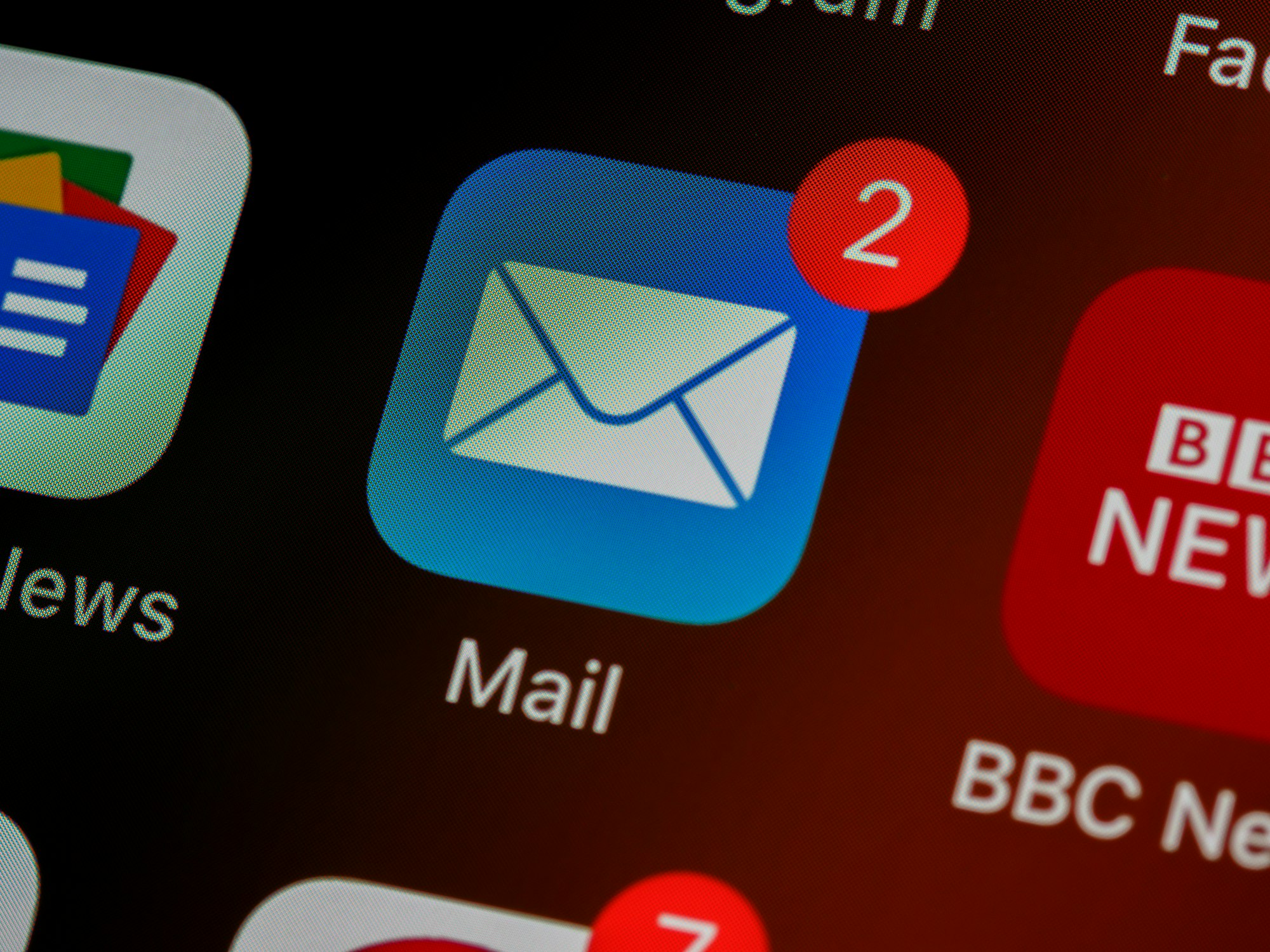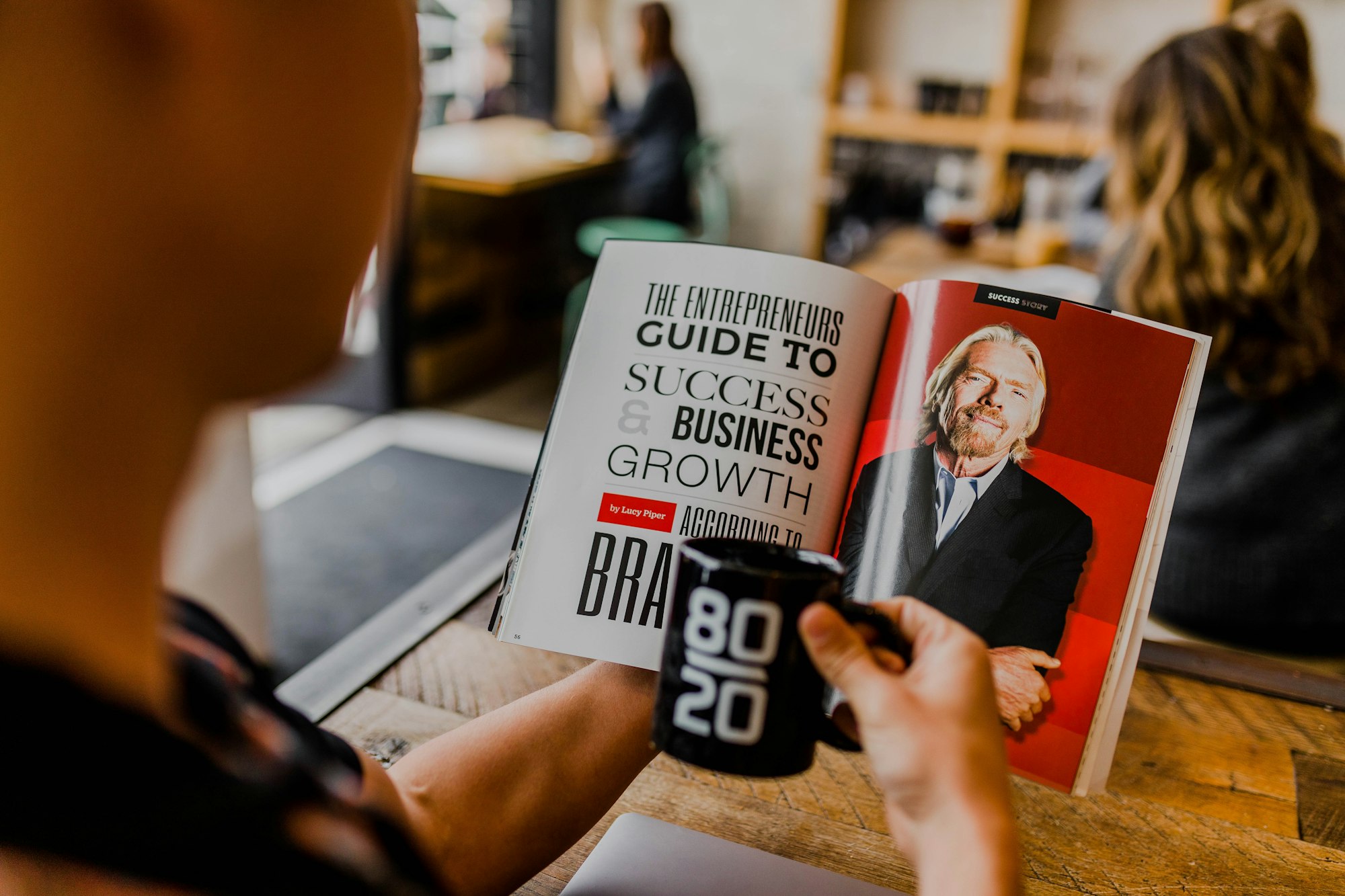Over time, the marketing industry has changed tremendously. Traditional marketing in the 'Mad Men' era is now deemed outdated. Consider the last time you purchased something or used a service. Did you wait for commercials to appear on TV or did you contact a salesperson to inquire about their services? — Isn't your answer a resounding 'NO?'
You most likely did what the majority of people do these days: you went online and researched about it. You may not realize it, but you're already a significant part of today's new marketing process— it's called Inbound Marketing. Furthermore, it represents a significant shift in the way we conduct business in today's high-tech and hyper-connected world.

In today’s comprehensive guide, we will discuss all major aspects associated with Inbound Marketing. We’ll cover:
- Understanding Inbound Marketing
- Understanding Flywheel
- Inbound Marketing Versus Outbound Marketing
- Inbound Marketing Versus Digital Marketing
- 5 Inbound Marketing Principles
- Conversion Funnel of Inbound Marketing
- Strategies of Inbound Marketing
- Tools Associated With Inbound Marketing
- Advantages of Inbound Marketing
- Examples of Inbound Marketing
- Common Issues Resolved by Inbound Marketing
- Inbound Marketing Program: Planning/ Implementation/ Optimizing
- Return on Investment (ROI) of Inbound Marketing Program
- Analysis and Refinement Significance
- Frequently Asked Questions (FAQs) on Inbound Marketing
Understanding Inbound Marketing
It's a marketing approach aimed at enticing, educating, and empowering customers through relevant material that assists and guides them until they're ready to buy your services or products. However, in order to comprehend Inbound Marketing, you must first comprehend the buyer's journey.
The Buyer's Journey is a pre-and post-purchase investigation or research process that a buyer engages in. It consists of three stages: awareness, consideration, and decision.
You're in the awareness stage when you notice the initial signs of a problem, commonly known as 'Pain Points.' You tend to conduct high-level research in order to comprehend or identify whatever it is you require or are experiencing.
After this stage, the research bug truly strikes. The consideration stage is where you'll find yourself investigating your options, discovering various answers, and analyzing them all at the same time.
Finally, once you've done enough googling and racking your brains, you'll arrive at the choice stage. When you've finally decided on a solution, you'll be able to compare providers to make your final decision.
Inbound marketing is all about providing relevant and outstanding content for each stage of the customer's journey; this means you'll be assisting the consumer by understanding their difficulties and determining how your business can actually meet their demands. This is the inbound method of establishing brand loyalty and trust.
Furthermore, content can be delivered in a variety of media, including blogs, ebooks, infographics, whitepapers, landing pages, and videos, among others. Content within a context is what inbound marketing is all about.
Using an inbound marketing strategy will enhance brand exposure, lead generation, nurturing, and cost savings. It will also help to accelerate the sales process by educating prospects about your project or services.
Understanding Flywheel
Using the inbound model, the buyer is guided through a flywheel rather than a funnel. A flywheel works and spins when energy is added. In case, you add more energy, then it spins or rotates faster. On the other hand, the funnel needs to be regulated with constant energy.
The inbound flywheel is composed of three aspects— attract, engage, delight. Furthermore, inbound businesses utilize the flywheel method to generate trust, momentum, and credibility. In simple words, rotation of the flywheel signifies business growth and happy customers. And, slowing down (friction) of the flywheel signifies otherwise.
Prospects and consumers are drawn to your website by your inbound marketing methods and platforms. Then you continue to assist, support, and empower them from the first point of contact to long after they've become a customer.
This favorable relationship will attract more visitors and boost conversion to consumers through referrals or earned promotions. The focus is constantly on how to help current and potential customers.
Friction, on the other hand, is defined as anything that causes your flywheel to slow down. Because team handoffs are usually the most vexing points for your customers, team alignment and communication are key to keeping your flywheel spinning.
Once you've attracted a significant number of customers and engaged and pleased them, they'll keep the flywheel spinning by spreading the word about your business and bringing in new customers. Your flywheel allows you to grow over time without having to invest in client acquisition all of the time.
Marketing, for instance, will likely play the most important role in the attract phase through blogging, event marketing, and paid advertising, but your sales team can add force by engaging in social selling, and your customer service team can add force by making it easier for current customers to refer others.
Inbound Marketing Versus Outbound Marketing
You should know the differences between inbound and outbound marketing if you want to get the most out of your sales and marketing budget. And how you may use these two very different marketing strategies to effectively sell your firm.
Further, when you utilize advertising to go out and find customers, this is known as outbound marketing. Furthermore, locating new customers is also part of outbound marketing.
Outbound marketing is going out and looking for clients before directing them to your front door. When customers are ready to buy, the goal is to reach out to them with a sales message that will persuade them to choose you over a competitor. Television, newspapers, telemarketing, radio, and other forms of outbound marketing are examples.
All of these mediums have been used as a marketing strategy for a long time. Because they rely on sending a sales message out over phone lines, or print media to attract customers to come to you, they're also known as outbound marketing.
Moreover, businesses have been using traditional outbound strategies for decades. Unfortunately, in recent years, traditional marketing methods have begun to lose some of their effectiveness with customers.
Is this to say that outbound marketing is no longer effective? — Well, Fortunately, some outbound marketing tactics, such as outside sales, direct mail, and email marketing, are still effective.
Inbound marketing is when you advertise in a way that allows customers to find you. Inbound marketing is how customers find you. This kind of marketing is both cost-effective and effective. It uses social media sites like Facebook, Twitter, Instagram, LinkedIn, and even blogs to help your business connect with potential clients.
A fantastic website is the first step in the process. To compete, you'll need an excellent eCommerce website. Your prospects of success in inbound marketing are nil if you don't have an excellent website.
The next step is to learn how to use social media websites. Because they will open the door to tens of thousands of potential clients and prospects. Inbound marketing is exciting because it genuinely assists purchasers in finding you.
Inbound Marketing Versus Digital Marketing
An element of an integrated inbound marketing strategy is digital marketing.
The phrase ‘digital marketing’ refers to a variety of content pieces that are utilized to engage with a target audience. It includes pay-per-click (PPC), content marketing, social media marketing, search engine optimization (SEO), email marketing, and more.
Inbound marketing is a tactical customer-oriented and customer-driven marketing strategy that focuses on attracting customers. However, the main distinction between digital marketing and inbound marketing is that the former does not imply a plan. You have to include content that your customer might find useful such as eBooks, blogs, checklists, and more.
Furthermore, Inbound and outbound marketing methods are not differentiated in digital marketing. Outbound marketing aims to reach as many people as possible, regardless of whether the message is relevant or acceptable.
On the other hand, inbound marketing aims to reach as many people as possible, regardless of whether the message is relevant or accepted. Inbound marketing differs from outbound marketing since it is more targeted and personalized.
Inbound marketing employs these sorts of digital media: owned, earned, and paid.
Check these categories:
5 Inbound Marketing Principles
To better understand inbound marketing, it is vital to understand the five fundamentals of inbound marketing: traffic attraction, conversion, marketing automation, loyalty, and analysis.
Boosting Traffic
Motivate people to visit the company's website as the initial step. Rather than focusing on attracting a big number of visitors, concentrate on attracting quality users that suit your desired client profile or buyer persona.
A multitude of approaches can be used to accomplish this, including:
- SEO: focusing on putting your website at the top of the main search engines will make it appear as a prompt solution to the user's wants.
- Social Media: Using social media as a distribution channel to get your work in front of more audiences.
- Content Marketing: The process will be reinforced by supplying consumers with valuable content when they need it.
Conversion
You want a user to register their information on your website so they can become a lead and receive information from you in the future.
Presenting valuable material in exchange for filling out a form is the conventional technique for converting consumers into potential clients. There are, however, a slew of other options, such as giving test demos, arranging meetings, or engaging with them over the phone or via chat. Obtaining their information and entering it into your database will always be the goal.
Automated Marketing
The cornerstone of this pillar of inbound marketing is the systematization of the process through which you communicate with your leads until they become clients. This can be accomplished through the use of tactics such as:
- Lead scoring: The basis of this strategy is the creation of an evaluation system that allows you to objectively estimate the possibility of a lead becoming a client.
- Lead nurturing: You design a series of automated flows based on the lead's score and traits to send appropriate information to your contacts based on their requirements.
Dedication and Loyalty
The process of converting a lead into a client does not end there. Further, the next approach is to use methods such as newsletters, special offers, and incentives to keep this client on board for as long as feasible.
Maintaining a client is significantly less expensive than acquiring a new one, so creating a great loyalty program is quite advantageous for the company.
Analysis
Without a plan to assess and analyze the results, no inbound marketing strategy is complete. You'll need to carefully determine the KPIs (key performance indicators), which are the most significant metrics for establishing whether or not your strategy is effective.
Periodic checks are also necessary to analyze the results and, if necessary, adjust previously set measures.
Strategies of Inbound Marketing
Check the following inbound approach of attracting, engaging, and delighting customers:
Attracting Tools and Strategies
Inbound marketing tactics that attract your target audience and buyer personas are associated with content establishment and development.
Engaging Tools and Strategies
While using inbound marketing methods to engage your audience, make sure you're connecting with prospects and customers in a way that encourages them to form long-term relationships with you.
Delighting Tools and Strategies
Customers are delighted, happy, and supported even after they make a purchase, because of inbound marketing strategies that delight them. These techniques entail your employees acting as consultants and specialists who can help clients at any time.
Conversion Funnel of Inbound Marketing
Clients are nurtured by inbound marketing from the first time they meet you until they become committed customers. As a result, it's critical to understand how this process works and which approaches are best for certain stages.
A conversion funnel is a useful tool for comprehending this concept. It's a diagram that depicts the several stages of a customer's journey. The form of the funnel is produced by the decreasing quantity of customers at each level. We'll need to attract a bigger number of users to the website than X if we want to get X conversions.
Three key steps can be found inside the conversion funnel:
TOFU (top of the funnel or first contact):
Users become aware of a need, which they are actively working to accomplish. As a result, material that caters to a variety of user demands, such as ebooks, infographics, and tutorials, will be required throughout this phase. Further, display ads, social media video campaigns, and native ads are all possibilities.
MOFU (middle of the funnel, when the user is evaluating different options):
The user assesses numerous options that may be able to suit their requirements after completing the preliminary investigation. In addition, more specialist content is required in this case, such as expert interviews, in-depth guides, testimonials, or product demonstration videos. Email marketing, social ads, and retargeting are among the most effective advertising tactics.
BOFU (bottom of the funnel or closing the sale):
Finally, at this stage— the consumer is ready to convert. Moreover, to entice them, we can offer launch offers, free trials, and tailored services.
Tools Associated With Inbound Marketing
More than mere automation is possible with inbound marketing tools. The best way to target your audience and maximize your content strategy implementation is to use the necessary tools.
These technologies make it easy to concentrate on social media distribution, lead management, and ROI measurement. Further, with the help of a decent Content Management System, you can curate and plan content, distribute it across social media networks, and create company blogs and newsletters (CMS).
Let’s check the following tools list that would help you with inbound marketing.
Analytical Software Tools
Following is the list of analytical software tools. Check out:
Social Tools
Here’s a list of social tools that will help you. Check out
Tools for Email and Newsletters
Following is the list of tools for emails and newsletters. Check them:
Tools for your Content Management System (CMS)
Following is the list of tools for content management systems (CMS). Check out:
Advantages of Inbound Marketing
Following is the list of advantages associated with Inbound Marketing. Check out:
Target the correct audience in the right area to generate a lot of traffic
By focusing your inbound marketing approach on reaching the right people in the right locations, you can attract your target clients and achieve your digital marketing goals. This is a better option than squandering money on traffic that is unlikely to convert.
Reduce dependency on a single source of information
By pursuing high-quality traffic from a variety of sources – organic search, social media referrals, and referrals from other websites complimenting your work – you reduce your reliance on a single channel and, as a result, the risk that comes with it.
Improve your brand persona
Inbound marketing is all about giving potential customers the information they need in an entertaining and engaging way, even if they don't understand it. It's not about squeezing undesired purchases out of you at every opportunity. Ultimately, the goal is to use inbound marketing to position your company as a valuable and trustworthy resource so that when it's time to buy, they'll come to you.
Examples of Inbound Marketing
Following is the list of examples associated with Inbound Marketing. Let’s have a look:
- Content gateways provide access to how-to video instructions, blogs, case studies, webinars, white papers, and other product information.
- Photo contests and review aggregation are examples of user-generated content and social media marketing methods.
- Interactive web content pieces were created in partnership with associated firms to increase digital PR and promotional possibilities.
- Use your company's website to blog in order to give high-quality information to your target audience
Common Issues Resolved by Inbound Marketing
Here we have discussed some common issues that are solved by Inbound Marketing. Let’s check:
Inbound Marketing Program: Planning/ Implementation/ Optimizing
Inbound marketing is a case where the more capital you invest, the merrier. Moreover, when it comes to developing excellent content, it's more about intellect and dedication than investment. You can't make content powerful by slamming bucks on it; you have to put your heart and spirit into it.
Follow these steps to get started:
Return on Investment (ROI) of Inbound Marketing Program
Inbound marketing differs from traditional marketing tactics in that it often has a lower upfront cost and can yield a big return on investment when done correctly.
- Inbound marketing is a low-cost strategy. Businesses that rely only on inbound marketing save more than $14 each new customer
- You get leads via inbound marketing. When compared to traditional marketing, inbound marketing generates three times the number of leads
- Inbound marketing has a track record of delivering a positive return on investment. A return on investment is seen by 44 percent of marketing automation software users after six months, and 75 percent after a year
Analysis and Refinement Significance
If you learn anything from inbound marketing, it's the importance of tracking results and fine-tuning your plan as needed. Further, this is the point where testing comes in as well.
Determine which messaging, images, calls to action, types of valuable content, and other aspects perform best for your target audience and employ them on a regular basis or in your next campaign.
Frequently Asked Questions (FAQs) on Inbound Marketing
Following we have discussed frequently asked questions (Faqs) on Inbound Marketing. Lets’ learn:
Q. Is Inbound Marketing Effective?
Definitely! Case studies conducted by large enterprises and small firms have proved ROI. When done correctly, it can be a more cost-effective and efficient source of leads than many standard outbound marketing tactics.
Q. How long does it take for inbound marketing to produce results?
It's impossible to say how long it will take to see results because there are so many variables, including your industry, the market you're in, the duration of your sales cycle, your present marketing activities, and your level of commitment to the partnership.
Most of our clients, on the other hand, get quick returns such as increased traffic and new leads once we launch the first piece of content, and their businesses develop dramatically from there.
Because we believe in setting clear expectations around here, it's critical to understand that inbound marketing isn't intended to be a fast fix or a short-term endeavor.
Q. Is it possible for me to undertake inbound marketing on my own?
Yes, you could certainly do it on your own, and many organizations have done so effectively. You can find the majority of firms that will assist you with inbound marketing.
How Deskera Can Assist You?
Whether you are a sales manager or running your own business, there are tons of duties and responsibilities that you have to fulfill. Using the Deskera CRM system, you can manage your contacts, leads and sales deals. You can use the CRM system to manage all customer data and manage your leads, sales negotiations and deals.
Doing so will help you to save the time taken in transferring customer data between the different systems. Having a good CRM system will help you manage your financial and sales reports and be prepared to kick-off your meetings.
Deskera can also assist you with real-time updates about your business like cash flow status, customer satisfaction, inventory management, sales, purchases, purchase orders, customer tickets, customer satisfaction, managing leads, revenues, profit, and loss statements, and balance sheets.
Moreover, it would also help in integrating sales methodology across different platforms onto one system so that you have a consolidated list for email campaigns, leads management, and sales pipeline to mention a few.
It will also help you to sync between your orders, payments, taxes, refunds, product variants, sending out invoices and reminders, facilitating invoice management, and even undertaking follow-ups and advertisement campaigns.
Such a consolidated platform will help you to improve your sales through building effective sales compensation plans and also facilitate faster and well-informed decision-making. It will help you in strengthening your opportunities and being braced for the threats.
Deskera books and Deskera CRM will also be able to ensure the highest customer satisfaction and thereby an increase in net revenues and net profits.
Final Takeaways
We have finally reached the final point of this comprehensive guide. We have summarized the important key elements for your reference. Let’s check:
- Inbound marketing is all about providing relevant and outstanding content for each stage of the customer's journey.
- The Buyer's Journey is a pre-and post-purchase investigation or research process that a buyer engages in. It consists of three stages: awareness, consideration, and decision.
- Using the inbound model, the buyer is guided through a flywheel rather than a funnel.
- Outbound marketing is going out and looking for clients before directing them to your front door. When customers are ready to buy, the goal is to reach out to them with a sales message that will persuade them to choose you over a competitor.
- Inbound marketing employs three sorts of digital media: owned, earned, and paid.
- To better understand inbound marketing, it is vital to understand the five fundamentals of inbound marketing: traffic attraction, conversion, marketing automation, loyalty, and analysis.
- If you learn anything from inbound marketing, it's the importance of tracking results and fine-tuning your plan as needed.
Related Articles





![A Comprehensive Guide on Inbound Marketing [2022 Guide]](/blog/content/images/2021/11/campaign-creators-ARW7Ic7MSAM-unsplash.jpg)






